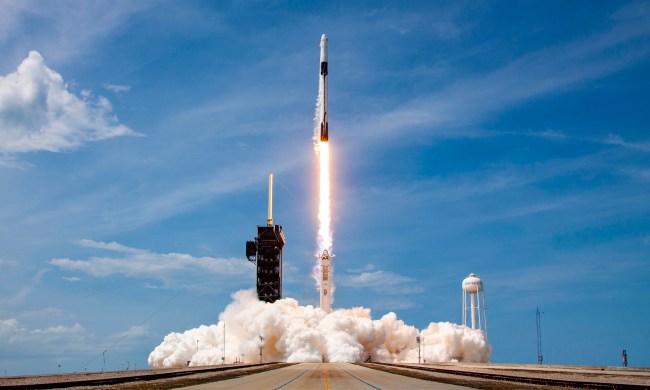A magnet housed at the National High Magnetic Field Laboratory in Tallahassee, Florida, has set a record for the strongest continuous DC magnetic field ever recorded with a 45.5-tesla rating. To put this figure in perspective, a small, but strong everyday neodymium magnet scores about 0.2 teslas, while a large electromagnet comes in at around 1.5 teslas.
The 45.5-tesla benchmark was achieved in a coil smaller than a can of soda. The magnet weighed just 390 grams. The coil was wound using a superconductor referred to as rare earth barium copper oxide (REBCO). This was then wrapped with white fiberglass tape.
“My colleague Seungyong Hahn had developed a new method of winding magnets that avoids insulation and thus allows even more conductor in the winding, a direct help to raising the field in the very tiny space available,” David Larbalestier, chief materials scientist at the Magnetic Field Laboratory, told Digital Trends. “The winding is, in fact, only about 11 mm thick. Tape with very thin substrate from SuperPower enabled the magnet to operate at the phenomenally high current density of more than 1,400 amperes per square millimeter.”

The new record-breaking magnet beat the previous record for a magnet by 0.5 of a tesla. The researchers note note the significance of the feat in an abstract describing the work: “For almost two decades, 45 tesla has been the highest achievable [DC] magnetic field. However, such a field requires the use of a 31-megawatt, 33.6-tesla resistive magnet inside 11.4-tesla low-temperature superconductor coils, and such high-power resistive magnets are available in only a few facilities worldwide.”
This new magnet, on the other hand, is impressively compact. In not only setting a new DC record, but also doing so for an extended period of time, it opens up the possibility of using small magnets for everything from future particle colliders like the Large Hadron Collider to nuclear fusion reactors or medical diagnostic tools. And, who knows, maybe someone can one day bring it to Kickstarter as an immovable fridge magnet. (Okay, we kind of doubt that one!)
A paper concerning the project, titled 45.5-Tesla Direct-current Magnetic Field Generated With a High-temperature Superconducting Magnet, was recently published in the journal Nature.


